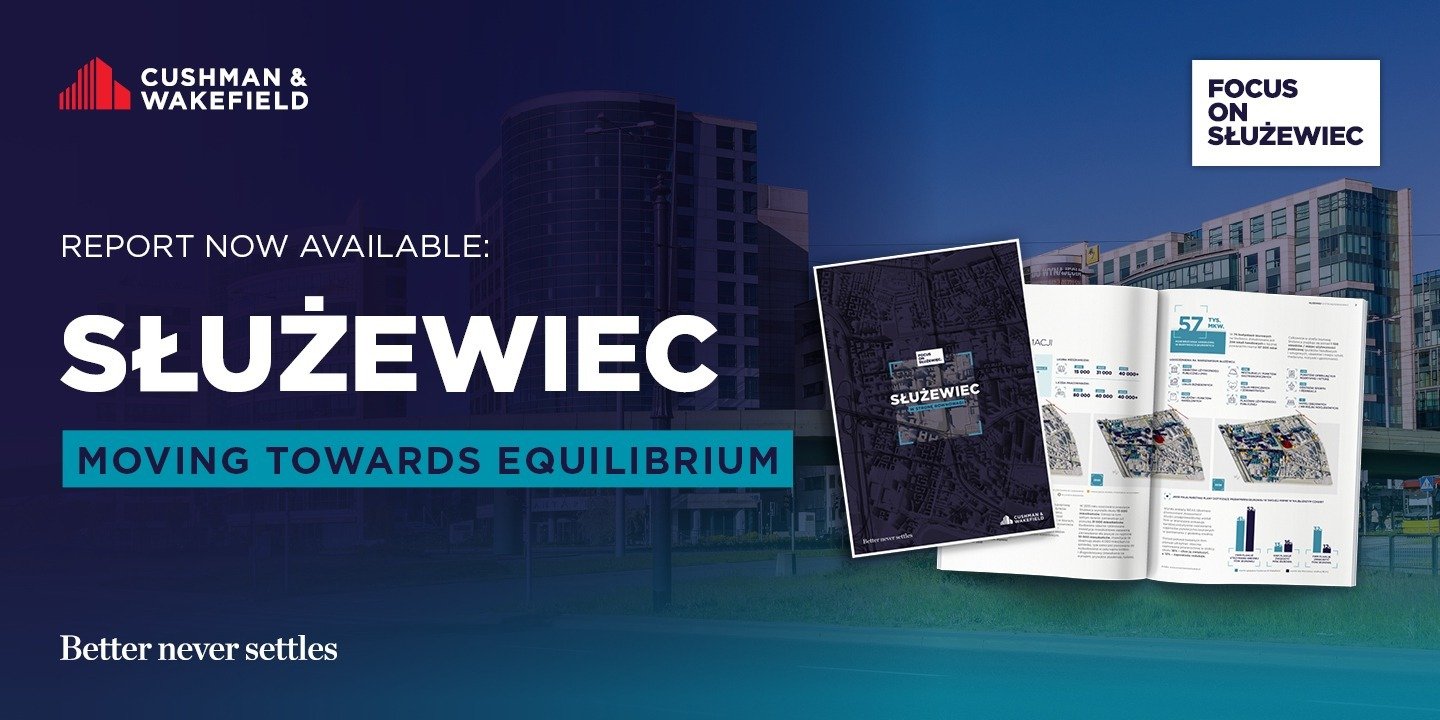Służewiec is undergoing yet another transformation. After decades of being dominated by offices, this part of Warsaw is evolving into a more balanced, multifunctional and vibrant 24-hour urban area. This change is being driven by the rapid growth of the residential and PRS sectors, the shrinking office stock and social infrastructure improvements, reveals Focus on Służewiec: Moving Towards Equilibrium, the latest report from global real estate services firm Cushman & Wakefield.
A balanced district instead of a monoculture
Służewiec has long been synonymous with a major office hub – in its heyday, its office stock peaked at over 1.1 million sqm, making it a clear leader in the CEE region. What we are seeing today is a return to market equilibrium and social revitalisation. The district is catching up with ongoing infrastructure developments and redefining its identity. It is increasingly becoming a place for living, studying and leisure – not just work,”
comments Ewa Derlatka-Chilewicz, Head of Research, Cushman & Wakefield.
Infrastructure is catching up
Demographic changes are accompanied by further improvements to social and transport infrastructure, exemplified by the opening of Warsaw’s first developer-funded school in Konstruktorska Street. There are now more than 1,100 service outlets and points of interest across Służewiec. In addition, several new roads have recently been completed, including Logarytmiczna Street, with bike lanes added. In addition, the expansion of the rail transport network and the planned link between Służewiec and Warsaw West Station are expected to further improve connectivity with other parts of the capital. In the long term, the district will also benefit from the construction of the M4 metro line, which will connect Białołęka and Wilanów via Służewiec,”
adds Vitalii Arkhypenko, Market Analyst, Cushman & Wakefield.
Office market: When less means more
The shrinking supply and competitive rents are creating opportunities for both tenants and landlords. Upgrading well-located, existing buildings to meet sustainability standards is becoming a key strategy. A good example is Nefryt, which enjoys high occupancy rates thanks to active property management and BREEAM In-Use certification at the Excellent level,”
says Bożena Jurek, Senior Portfolio Manager, Cushman & Wakefield.
Today’s Służewiec offers great potential for investors. Future buyers can unlock compelling opportunities to acquire competitively priced office buildings with high occupancy levels and significant value-add potential. This is a market for players who understand value-add strategies and can identify opportunities in established assets that, once refurbished, can successfully compete for demanding tenants,”
says Marcin Kocerba, Partner, Capital Markets, Cushman & Wakefield.
Residential boom and a new social fabric
Benefiting from its rapid residential development, Służewiec successfully attracts new residents. And with the fast-paced growth of the PRS and PBSA sectors, the district is also becoming a hub for young professionals and students, bringing new dynamics and vibrancy to the area. Several student housing projects are currently under construction, including Student Space and Speedwell Polska’s Milestone Warszawa Mokotów, alongside additional rental housing developments,”
adds Karolina Furmańska, Associate, Strategic Consulting & ESG | Capital Markets, Cushman & Wakefield.
About Cushman & Wakefield
Cushman & Wakefield (NYSE: CWK) is a leading global commercial real estate services firm for property owners and occupiers with approximately 52,000 employees in nearly 400 offices and 60 countries. In 2024, the firm reported revenue of $9.4 billion across its core service lines of Services, Leasing, Capital markets, and Valuation and other. Built around the belief that Better never settles, the firm receives numerous industry and business accolades for its award-winning culture. For additional information, visit www.cushmanwakefield.com.

